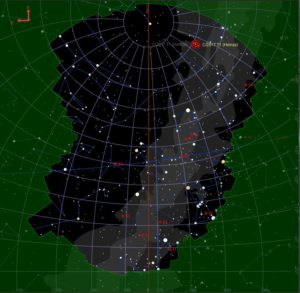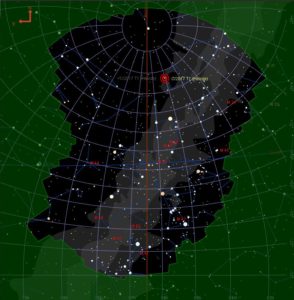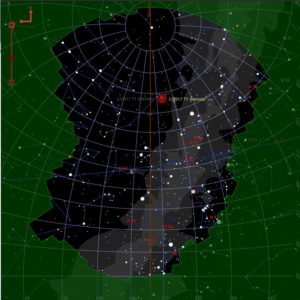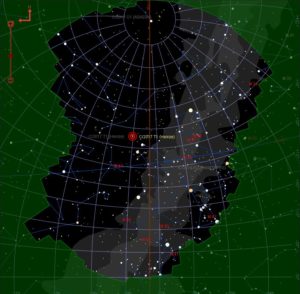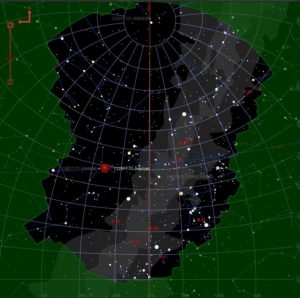Comet Heinze continues to climb above the plane of the solar system and the Earth is now pulling away from the comet. It is still outside Earth’s orbit as it heads toward perihelion on the 21st of February. It now appears in Cassiopeia on its tour of our constellations.
| These images were taken last night (the 6th). The comet’s tail is becoming more apparent. There were some high thin clouds that were passing and are evident in the animation. I added a second pass thorough the images at a slower rate to make it easier to pick out the two satellites that photobombed the comet. One is in one frame and passes from bottom left to right center (or vice versa). The second is a much slower satellite. It takes two frames (10 min) to pass from bottom center to top right. |
